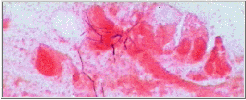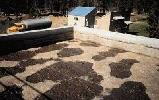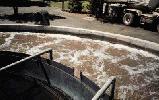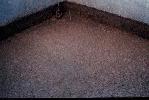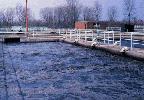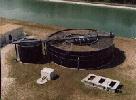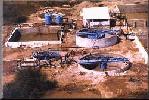| Filamentous organism |
Factors promoting rapid growth |
| Haliscomenobacter hydrosis, Sphaerotilus natans, type 1701 |
Low DO |
| Haliscomenobactor hydrosis, Microthrix parvicella, Nocardia spp.,
type 021N, type 0041, type 0092, type 0581, type 0675, type 0803 and type 0961 |
Low F / M |
| Sphaerotilus natans, Thiothrix spp. fungi, type 0675 and type 021N |
Low Nutrients (nitrogen or phosphorus) |
| Nocardia spp fungi |
Low pH |
| Type 0041, type 0092, and Microthrix parvicella |
Low organic load |
| Beggiatoa spp, Thiothrix spp and type 021N |
Septic wastewater / Sulfides |
 "Denitrification"...
"Denitrification"...
 "Denitrification"...
"Denitrification"...
